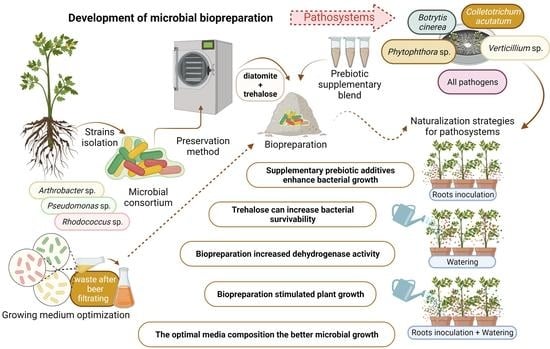Optimization of Growing Medium and Preservation Methods for Plant Beneficial Bacteria, and Formulating a Microbial Biopreparation for Raspberry Naturalization
Abstract
Share and Cite
Pylak, M.; Oszust, K.; Frąc, M. Optimization of Growing Medium and Preservation Methods for Plant Beneficial Bacteria, and Formulating a Microbial Biopreparation for Raspberry Naturalization. Agronomy 2021, 11, 2521. https://doi.org/10.3390/agronomy11122521
Pylak M, Oszust K, Frąc M. Optimization of Growing Medium and Preservation Methods for Plant Beneficial Bacteria, and Formulating a Microbial Biopreparation for Raspberry Naturalization. Agronomy. 2021; 11(12):2521. https://doi.org/10.3390/agronomy11122521
Chicago/Turabian StylePylak, Michał, Karolina Oszust, and Magdalena Frąc. 2021. "Optimization of Growing Medium and Preservation Methods for Plant Beneficial Bacteria, and Formulating a Microbial Biopreparation for Raspberry Naturalization" Agronomy 11, no. 12: 2521. https://doi.org/10.3390/agronomy11122521
APA StylePylak, M., Oszust, K., & Frąc, M. (2021). Optimization of Growing Medium and Preservation Methods for Plant Beneficial Bacteria, and Formulating a Microbial Biopreparation for Raspberry Naturalization. Agronomy, 11(12), 2521. https://doi.org/10.3390/agronomy11122521







